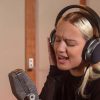One requirement for 7.1-channel surround is sufficient space behind your couch and listening area — at least 5 feet or more. If your couch is jammed up against the rear wall or you have a comparatively small room of less than about 2,100 cu. ft. (length x width x height), the addition of two rear surround speakers will not likely add significant improvements in envelopment, especially if you are already using Axiom’s QS8 or QS4 “multi-polar” surround speakers. However, if you have the space behind the listening area to play with, and/or your room is medium to large sized (especially so-called great rooms and family rooms), four surround speakers will deliver noticeably improved surround envelopment and coverage for all viewers in different seating locations.
While the great bulk of movie soundtracks (including all SACD and DVD-Audio music discs) are mixed in 5.1 channels, there are increasing numbers of movies (the Harry Potter movies and other movie “spectaculars”) mixed in 6.1 and 7.1 channels, including a surprising number of games. But the real justification for upgrading to 7.1 is the sophistication of smart decoding algorithms from Dolby Labs, dts, and Logic7 (the latter exclusive to Harman-owned companies).
Among its many virtues, Dolby Pro Logic IIx (DPLIIx) as well as earlier versions has the ability to extract or interpolate extra surround data from a standard 5.1-channel mix or even from stereo sources, and re-direct that information to both side and rear surround channels, all of which will increase the sense of depth and precision of the surround experience. (Don’t confuse this process with the “seven-channel stereo” option offered on many AV surround receivers. While pleasant, it only parcels out two-channel stereo among all the speakers in a system.)
Reasons to Believe
No matter how you look at it, there are persuasive reasons to consider upgrading to 7.1 channels with its four surround speakers. Incidentally, there is nothing fake or phony about electronically extracting surround data from existing 5.1 or even 2-channel stereo soundtracks. Just two microphones in a conventional stereo purist recording will pick up all kinds of out-of-phase information, which commonly characterizes ambient surround data, so re-directing those sounds to the sides and rear is really just placing them where they would occur in a dedicated elaborate multi-microphone recording array.
On the road to 7.1 channels, both Dolby Labs and dts previously introduced extended surround formats that use 6.1 channels (a single rear center speaker is utilized besides the left side and right side surrounds), namely Dolby Surround EX 6.1 and DTS-ES 6.1, respectively. The presence of these formats on some DVDs needn’t confuse you (you may even have a 6.1-channel setup already) because both Dolby and DTS processors (and Logic7) will redistribute the surround information to a 7.1-channel setup so long as your AV receiver contains the necessary seven amplifier channels.
Type of Surround Speaker
Finally, the still-debated (except by owners of Axiom multi-polar QS8 surrounds) subject of what type of surround speaker is required for the extra Left and Right rear surround channels continues to surface, in part because of some control-room monitoring setups for SACD and DVD-Audio recordings, where conventional forward-firing surround speakers were used in the back channels. While there are still some who recommend forward-firing speakers for the back surrounds, I’d point out that the original development of dipole, bipole and multi-polar surrounds was to increase diffusion and envelopment in the surround field to simulate the presence of 8 or 10 surround speakers in a large cinema. As such, the Axiom QS8 (or QS4), with its top and bottom-firing woofers and angled dual tweeters comes as close to the ideal for both ambient sound field generation without giving up the specific directional cues sometimes found in movie soundtracks and multi-channel music recordings.






























